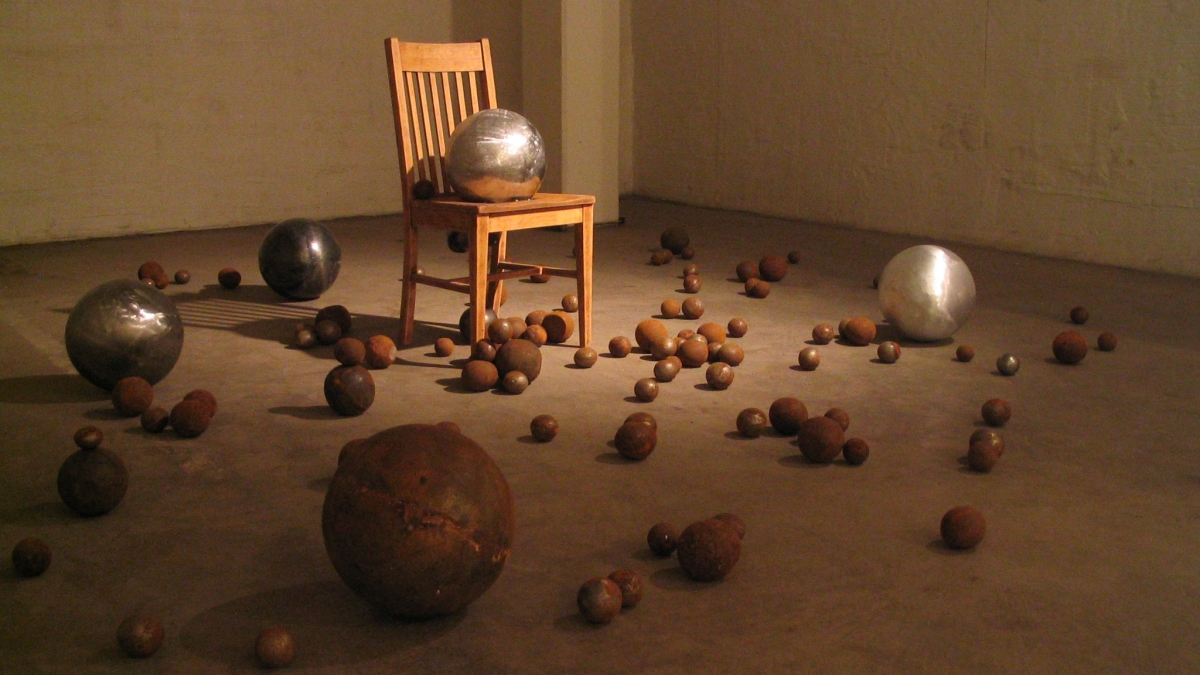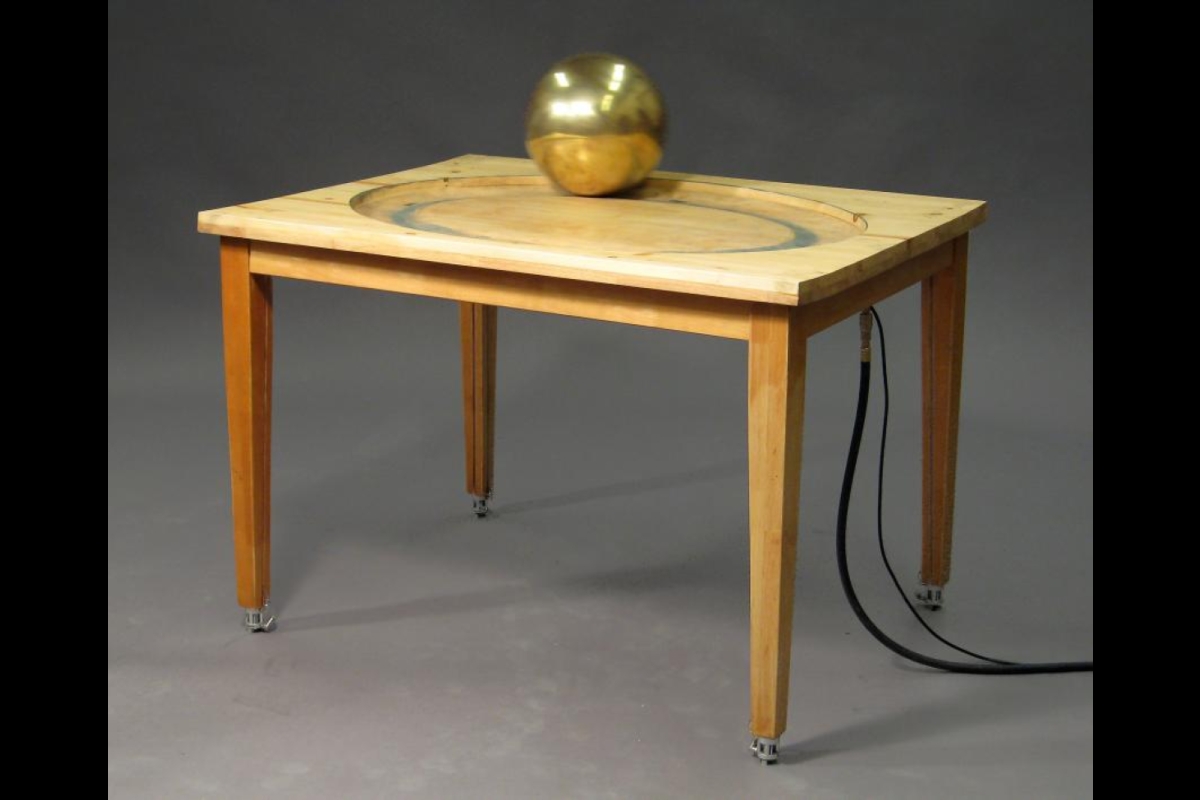Young sculptor uses engineering to win international award

David Young, Object at Rest, 2006
Mixed media
Varying dimensions
Photo by the artist.
TEMPE, Ariz. – David Young, an MFA student in the Herberger College School of Art at Arizona State University, traveled to New Jersey during October with his mentor, art faculty member Jim White, to receive the International Sculpture Center’s (ISC) 2007 Outstanding Student Achievement in Contemporary Sculpture Award. The ISC is the world’s leading international organization devoted to the creation and understanding of sculpture. Each year, it presents a recognition-award competition among college and university students to support the work of young sculptors.
One of only 20 student artists in the world to receive the prestigious award, Young won for his kinetic piece, Object in Motion. The sculpture consists of a 20-pound, cast-brass sphere on a wooden table set with sensors. The sensors are connected to pneumatic cylinders in each table leg, which automatically adjust the table’s surface to keep the sphere in constant motion. Young’s piece is the only pneumatic piece and one of only two kinetic pieces in the exhibition, which runs through April 27, 2008.
“David is one of our best sculptors,” says White. “His pieces are very well thought out and conceptually sound, which the jurors responded to.”
White first met his future protégé at a six-week summer sculpture program in Deep Creek, Colorado run by Dan Collins, ASU Herberger College sculpture professor. Fellow faculty member Angela Ellsworth, who specializes in intermedia and performance, also became acquainted with Young during the program. Young’s connections to the ASU Herberger College School of Art faculty eventually led him to Arizona.
“One day Angela called me about a sculpture teacher position at a new charter school, which she felt I’d be perfect for,” Young says. “I literally got the call on Friday, hopped in my car, and was teaching on Monday.”
White thinks Young is an excellent teacher. “David’s students come to us so much better prepared, organized and professional than other sculpture students,” White says. “I know it’s his enthusiasm; it’s contagious.”
While teaching in Arizona and remembering the relationships he formed with Collins, Ellsworth and White at Deep Creek, Young decided to apply to the graduate sculpture program in the ASU Herberger College School of Art.
Though Young’s parents hoped that he would be an engineer; they are very proud of him and agree that art is his calling. They accompanied him to the ISC awards ceremony.
“I know they hoped that I’d be in a profession with more financial stability, but they respect what I do and that I have to follow my passion,” Young says.
Young does apply his understanding of engineering into many of his pieces. He began experimenting with kinetics in one of his first spherical pieces, Object at Rest. The piece consists of a chair in which a cast sphere rotates, causing the piece to vibrate and hum. Young uses what he describes as his “closet engineer and physicist skills” to make his kinetic pieces work. In Object at Rest, he first used an aluminum sphere, but found that it did not create enough friction with the chair to maintain the ideal rotational speed and it would often pop out. He moved to brass for its heavier weight and ideal rotation.
Young has been working with spheres for most of his sculptural career.
“The sphere almost always references the unknown – that which is undefined, but has its own form. Everyone recognizes it but no one knows what it is,” Young says. “When they look at the sphere, everyone imagines their own unknown. It becomes personal to them.”
Young also feels the sphere is an integral element in sculpture as it reflects light and the surrounding environment, making the viewer think about the sculpture in relation to its space and its meaning.
“I like the simplicity of the sphere,” he says. “I think of them as people, reflecting their conversations around the table or sitting in a chair and fidgeting.”
Young’s unique perspective will continue to be showcased in his art and it’s something that he wants to share with other art students.
“I know that I want to learn more about engineering and continue to make art, starving or not, preferably not,” Young says. “I have a great love of teaching. I’ve been teaching high school for nine years and would like to move to the college level.”
The School of Art is a division of Herberger College of the Arts at Arizona State University. Its printmaking, photography and art education programs are nationally ranked in the top 10, and its Master of Fine Arts program is ranked eighth among public institutions by U.S.News & World Report. The school includes four student galleries for solo and group shows by graduate and undergraduate art and photography students: Gallery 100, Harry Wood, Northlight, and Step. To learn more about the School of Art, visit http://art.asu.edu.
Media Contact:
Laura Toussaint
480.965.8796
laura.toussaint@asu.edu

